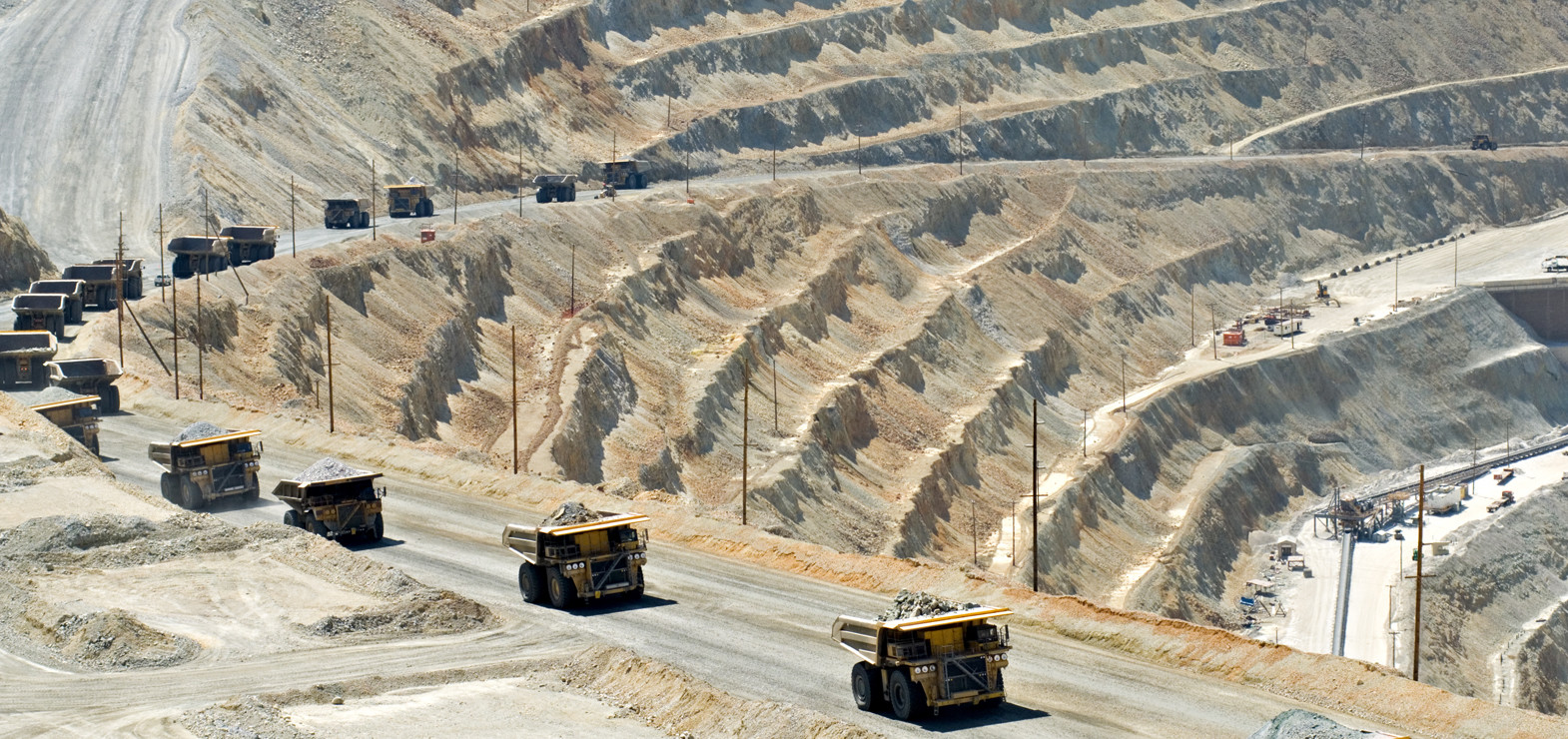Iranian miners and the government are locked in a peculiar, strained relationship.
Miners, most of whom belong to the private sector, hold that the government must act simply as a legislator and support paving the path for the sector’s growth, by avoiding pricing intervention, manipulating trade barriers and picking favorites among companies.
The government, however, believes that there is no invisible hand to regulate the market and that officials must put the industries, including the mining sector, on the right path by setting goals and roadmaps, and overseeing supply and demand.
What makes this relationship peculiar is that neither side can live up to what they advocate. While they are expected to fend for themselves and act independently, the private and semi-public sectors have for years fed on government subsidies, incentives and favorite-pickings and are still dependent on them.
The government, too, has rarely been able to navigate the "right" path. The goals it sets are highly ambitious and snap decisions taken along the way disrupt the market balance.
> An Interventionist Government
Minerals, especially iron ore—one of Iran’s main exported commodities, enjoyed a lengthy boom period from 2009 up to early 2015.
Private investments poured into the sector and the government issued numerous mineral exploitation permits for base metals while foregoing the development of processing plants. However, in 2015, the freefall in global iron ore, copper and oil prices began and the narrative shifted from bolstering exports to increasing domestic production and putting out high value-added processed goods, such as steel.
The government devised plans to turn Iran’s steel industry into the world’s sixth largest manufacturer of the industrial commodity as per the goals set in the 20-Year Vision Plan (2005-25), which stipulates the production of 55 million tons of crude steel per year.
In order to realize this figure, over 150 million tons of iron ore are required, which entail a 100-million-ton rise in production volume compared to 2014.
This started the government’s war on raw mineral exports. First, by amending Clause 8 of Article 14 of "the law on tackling barriers to competitive production and improving the country’s financial system" in early 2016, lawmakers cut export incentives for unprocessed mineral shipments.
The second initiative was officially announced on Sunday in a letter sent by Minister of Industries, Mining and Trade Mohammad Reza Nemtazadeh to the head of Management and Planning Organization of Iran, Mohammad Baqer Nobakht.
The letter calls for implementing 5-15% stepwise export tariffs for a three-year period on a number of commodities considered raw mineral sales, including zinc, lead, marble, chrome, manganese ores and their concentrates, iron pyrite ash, products made using direct lump iron ore reduction and granulated hematite iron ore with less than 40% content. The initiative is proposed to be introduced as of the next Iranian year (starting March 20, 2017) and go into full-force effect two years later.
“The government’s policy is to prevent raw mineral exports and create high-value added goods. Fortunately, with all the iron ore concentrate and pellet plants in the making, soon there will be no more iron ore for export,” Mehr News Agency quoted deputy minister of industries, mining and trade, Mehdi Karbasian, as saying.
This is while industry players contend that exports are their last remaining lifeline amid the unbalanced domestic market, and that the downstream sectors are not capable of absorbing all of the country’s ore output as there are not enough processing plants.
In fact, Iron Ore Producers and Exporters Association of Iran (one of Iran’s largest association of private miners) has filed a complaint with the Court of Administrative Justice against the mining department of the Industries Ministry.
The government does have a spotty record in limiting mineral exports. For instance, decorative stone shipments were banned back in 2006 to force miners to create higher value-added products.
However, hampered by sanctions and financially restrained, the miners were unable to gain access to the required modern machinery and consequently lost their standing in international markets to competitors like Turkey. The measure was eventually revoked, but the sector has yet to regain the markets it lost.
“State-enforced interventions and denouncing mineral exports as raw material sales will achieve nothing except preventing miners from making long-term development plans and leading to recession,” said Hamidreza Afrasiabi, CEO of Haffar Machine Company, a producer of mining machinery.
The industrialist added that the government must first balance domestic demand and help companies purchase modern production technologies before limiting exports.
In fact, the limitations to be set on mineral exports could not come at a worse time. According to Sajjad Qoroghi, a member of IROPEX, only 19 iron ore mines are currently operational out of a total of 156 across the country, indicating an 84% decline compared to 2013.
> Debt-Laden Miners Seek Bailout
President Hassan Rouhani presented the new budget bill for the next fiscal year (starting March 21, 2017) to the parliament last week.
Based on the document, the government expects to earn 21 trillion rials ($538.3 million at the market exchange rate) from mining royalty and usufruct payments in next year's budget. The total amount of the budget is 3,711 trillion rials ($95.1 billion), which puts it 10.6% over the budget for the current year.
The proposed figures for the mining sector remain relatively unchanged compared to the current year’s plan.
Furthermore, Iranian Mines and Mining Industries Development and Renovation Organization has announced that all individuals and businesses whose mineral exploitation permits belong to IMIDRO must clear their usufruct debts by March 20.
IMIDRO is Iran’s largest state-owned mineral holding and owns the usufruct licenses of most of the country’s major mines.
According to deputy minister of industries, mining and trade, Jafar Sarqeyni, the government must be paid 2.5 trillion rials ($641 million) in overdue usufruct fee by the miners, 65% of which must be paid to IMIDRO and the National Iranian Copper Industries Company, and the rest to other major mineral holdings, Donya-e-Eqtesad reported.
Sarqeyni noted that the miners intend to send a letter to First Vice President Es’haq Jahangiri, stating that they will not be able to pay the required sum due to their financial woes. They are going to ask the government to forego 4 trillion rials ($102.5 million) of the debt.
The miners are, in fact, applying a double standard when criticizing the government’s interventionist role in the sector by asking for a bailout.
What is required is a coming to terms by both sides.
The government should reduce its heavy-handed interventions in the sector and set short-term, clear policies based on the current condition of the market and the private sector.
Also, private miners should boost their competitive edge by acquiring new technologies, minimizing costs and focusing on long-term goals in order to maximize profit during boom periods and survive busts without governmental aid.



